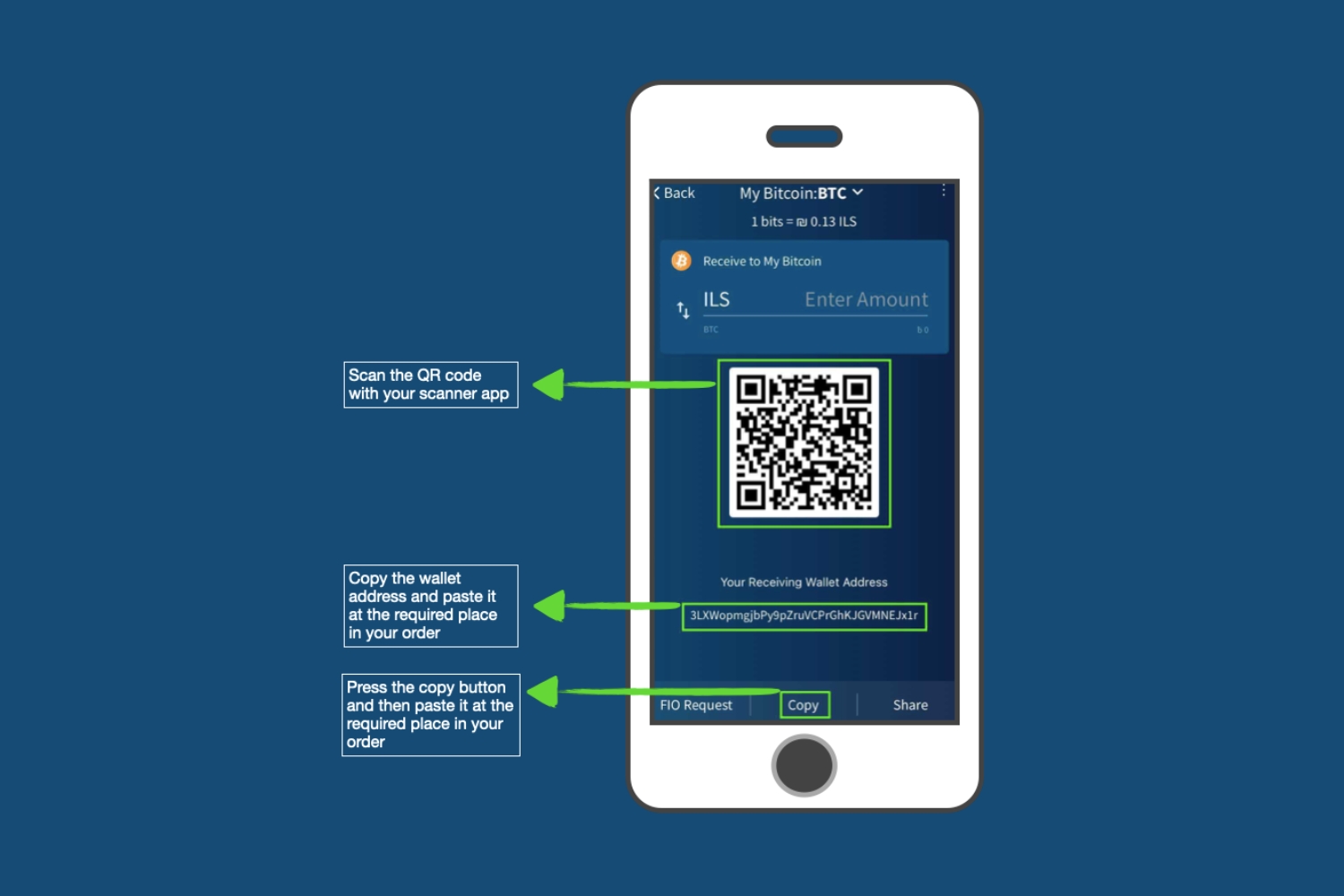Introduction
Have you ever found yourself in a situation where you can’t seem to locate your Bitcoin? Losing track of your digital assets can be a stressful experience, but fear not – you’re not alone. Many people have faced the same predicament, only to discover that their lost Bitcoin was sitting right under their noses. In this article, we’ll explore some helpful strategies and tips to help you find your lost Bitcoin.
It’s important to note that the decentralized nature of Bitcoin means that there is no central authority to turn to for assistance. However, there are several steps you can take to increase your chances of recovering your lost Bitcoin. Whether it’s misplaced in your digital wallets, stored in backup files, or forgotten on an old hardware device, we’ll guide you through the process of rediscovering your digital fortune.
Before diving into the search for your lost Bitcoin, it’s crucial to remain calm and patient. Panic and impulsive actions can often lead to further complications. Instead, take a deep breath and approach the situation methodically. Follow the steps outlined in this article, and hopefully, you’ll be reunited with your lost Bitcoin.
Please keep in mind that while we have assembled a comprehensive guide, these methods don’t guarantee success in every case. The recovery process is highly dependent on the specific circumstances surrounding the loss of your Bitcoin. However, by employing the strategies we’ll discuss, you’ll greatly increase your chances of locating your digital assets.
Now, it’s time to roll up our sleeves and begin the search for your lost Bitcoin. Let’s explore the various steps and options available to you, so you can take the necessary actions towards recovering your valuable digital currency.
Check Your Wallets
When trying to locate lost Bitcoin, the first place to start is by checking all of your digital wallets. Whether you have a software wallet on your computer or a mobile wallet on your smartphone, thoroughly examine each one to ensure you haven’t overlooked any stored funds.
Start by accessing your wallet software or app and reviewing your transaction history. Look for any incoming or outgoing transactions that you may have forgotten about. Sometimes, a simple oversight can lead to believing your Bitcoin is lost when it’s actually just in a different wallet or address.
If you have multiple wallets, it’s essential to check each one individually. Keep in mind that different wallets may have different addresses and private keys associated with them. So, even if you don’t find your lost Bitcoin in one wallet, continue to check the others.
Additionally, some wallets allow you to import or export private keys. If you have previously backed up your wallet or exported the private keys, check if you can import them into another wallet software. This can help you access your lost Bitcoin from a different device or software.
If you have a hardware wallet, such as a Ledger or Trezor, connect it to your computer and open the associated wallet software. Ensure that you have the most up-to-date firmware and software version installed. Sometimes, outdated software can lead to compatibility issues and prevent the proper display of your Bitcoin balance.
Remember to take your time and be thorough during this process. Check every wallet and address you have used in the past, including any backup or archived addresses. By giving each wallet a thorough examination, you may just stumble upon your lost Bitcoin.
Search for Backup Files
If you’ve made backups of your Bitcoin wallets or stored important files related to your cryptocurrency holdings, it’s worth searching through your backup files. These backup files can include wallet.dat files, key files, or mnemonic seed phrases.
Begin by checking your computer’s backup folders or external storage devices, such as USB drives or external hard drives. Look for any files with names like “wallet.dat” or files associated with your wallet software. These files may contain the necessary information to recover your lost Bitcoin.
If you’re unsure where your wallet backup files might be located, use the search function on your computer to look for specific file types or names related to your wallet software. Be sure to search across all drives and folders to ensure you haven’t missed anything.
It’s worth noting that wallet backup files can sometimes be encrypted for security purposes. If you come across encrypted backup files, make sure you have the necessary passwords or encryption keys to access the contents.
In addition to physical backup files, also consider checking any cloud storage accounts you may have, such as Dropbox or Google Drive. Sometimes, users may have unknowingly saved wallet backups to their cloud storage, providing an additional avenue to recover your lost Bitcoin.
Lastly, if you have ever written down or stored a mnemonic seed phrase, double-check your physical documents and secure storage locations. A mnemonic seed phrase is a series of words that act as a backup of your wallet’s private key. If you find your seed phrase, you can use it to restore access to your lost Bitcoin in a compatible wallet software.
By thoroughly searching for backup files and mnemonic seed phrases, you may be able to locate a copy of your wallet that holds your lost Bitcoin. Make sure to keep any discovered backup files and seed phrases safe, and consider creating new backups to prevent future losses.
Investigate Old Email Accounts
When searching for lost Bitcoin, don’t overlook the potential treasure trove of information stored in your old email accounts. Many cryptocurrency exchanges and wallet providers send important account details, transaction confirmations, and password reset instructions through email.
Begin by logging into your oldest email accounts and search for relevant keywords such as “Bitcoin,” “cryptocurrency,” or the names of any wallet or exchange providers you have used in the past. Pay close attention to any emails that mention transactions or account activity.
If you find any emails related to your Bitcoin holdings, review them carefully to gather essential details. Look for wallet addresses, transaction IDs, or any other information that could help you trace the location of your lost Bitcoin.
Furthermore, explore your email trash or spam folders. Sometimes, important emails can end up in these folders by mistake. If you come across any relevant emails, move them back to your inbox for easier access and organization.
In some cases, you may find email communication with customer support or technical teams of cryptocurrency exchanges or wallet providers. Reach out to these companies and explain your situation. They may be able to assist you further or provide guidance on recovering your lost Bitcoin.
Additionally, if you have ever interacted with third-party services or platforms related to Bitcoin, search for emails from them as well. This could include services like faucets, mining pools, or online marketplaces where you may have received or sent Bitcoin.
While investigating your old email accounts, ensure that you take the necessary security precautions. If you encounter suspicious emails or phishing attempts, do not click on any links or provide personal information. It’s always advisable to verify the authenticity of any email before taking any actions.
By thoroughly investigating your old email accounts, you may stumble upon important details or clues that lead you to the recovery of your lost Bitcoin. Be patient and meticulous in your search, as the emails you uncover may hold the key to accessing your digital assets.
Review Old Hardware Wallets
If you’ve used hardware wallets in the past to store your Bitcoin, it’s crucial to review and search through your old devices. Hardware wallets, such as Ledger or Trezor, provide an extra layer of security by storing your private keys offline.
Start by locating any old hardware wallets that you may have used. Connect them to your computer and ensure that you have the appropriate wallet software installed. Follow the instructions provided by the wallet manufacturer to access your wallet’s interface.
Once you’ve gained access to your hardware wallet, check your transaction history and balances. Look for any records of the Bitcoin you believe to be lost. It’s possible that you may have forgotten about certain transactions or funds stored on the device.
In some cases, you may have used multiple hardware wallets or conducted transfers between them. Ensure that you review the balances and transaction history of all the hardware wallets you’ve used in the past. Sometimes, your lost Bitcoin may be located on a different device.
If you have taken proper precautions, you may have created a backup of your hardware wallet’s recovery seed phrase. This seed phrase consists of a series of words that can be used to restore access to your Bitcoin on a compatible software wallet.
If you have a backup seed phrase, search for it in your physical documents or secure storage locations. It’s crucial to keep this seed phrase safe and secure as it could provide a way to recover your lost Bitcoin.
If you no longer have access to your old hardware wallets or have forgotten your PIN or passphrase, reach out to the manufacturer’s support team for assistance. They may be able to help you recover access to your funds, but be prepared to provide proof of ownership and go through a verification process.
By thoroughly reviewing your old hardware wallets, you increase the chances of locating your lost Bitcoin. Remember to keep your hardware wallets and backup seed phrases secure to prevent any future losses.
Explore Exchange Accounts
If you’ve used cryptocurrency exchanges in the past to buy, sell, or trade Bitcoin, it’s worth exploring your exchange accounts as part of your search for lost Bitcoin. Exchanges often hold detailed transaction records and may have additional features that can assist in locating your funds.
Start by logging into your exchange accounts and navigate to the transaction history or account activity section. Review your past transactions to see if there are any records of the Bitcoin you believe to be lost. Look for any deposits, withdrawals, or trades involving the specific Bitcoin addresses you used.
Exchanges typically provide search filters or advanced search options, so utilize those features to narrow down the results. You can search for specific Bitcoin addresses or transaction IDs to easily locate related activities.
In some cases, exchange accounts may also have features like “archived” or “hidden” wallets. These are separate wallets within your exchange account where you may have stored your Bitcoin. Check if you have any archived wallets and review their transaction history.
Furthermore, explore any wallets or addresses associated with margin trading, lending, or other advanced trading features offered by the exchange. Sometimes, funds can be unintentionally left in these accounts, especially if you used such features in the past.
If you find any relevant transactions or balances in your exchange accounts, follow the necessary steps to access or transfer the Bitcoin to your personal wallet. Keep in mind that some exchanges may have specific withdrawal limits or security measures in place.
In case you no longer have access to your exchange accounts or face difficulties recovering your funds, reach out to the exchange’s customer support team. Provide them with relevant details and proof of ownership to seek their assistance. However, be prepared for a verification process and provide any necessary documentation they may request.
Remember, while exploring exchange accounts, ensure that you have enabled proper security measures, such as two-factor authentication and strong passwords. Safeguard your account credentials and follow the best practices recommended by the exchange to protect your funds.
By thoroughly exploring your exchange accounts, you may uncover forgotten or misplaced Bitcoin that you believed to be lost. Take your time, be diligent in your search, and don’t hesitate to reach out to the exchange’s customer support for guidance.
Check Paper Wallets and Seed Phrases
If you’ve ever used paper wallets or stored mnemonic seed phrases, they could hold the key to recovering your lost Bitcoin. Paper wallets are physical printouts or documents containing the public and private keys necessary for accessing your Bitcoin.
Start by locating any paper wallets or printed QR codes that you may have generated in the past. These could be stored in a physical wallet, a safe deposit box, or any other secure location. Check your personal documents, old notebooks, or any other place where you may have stored important papers.
Carefully examine the paper wallets and scan the QR codes using a reliable and secure wallet app or software. Ensure that the app is configured to scan and import paper wallets. Once scanned, check the associated Bitcoin addresses to see if there are any funds stored on them.
If you find funds on the paper wallet, follow the necessary steps to transfer the Bitcoin to a secure digital wallet or a hardware wallet for better accessibility and security.
In addition to paper wallets, if you have ever written down or stored a mnemonic seed phrase, search for it in your physical documents or secure storage locations. A mnemonic seed phrase is a series of words that act as a backup of your wallet’s private key.
If you locate your seed phrase, you can use it to restore access to your lost Bitcoin in a compatible wallet software. Be cautious while entering the seed phrase and ensure you are using a trusted and secure software wallet to avoid any potential risks.
Remember, paper wallets and seed phrases should be treated with utmost security. Keep them in a safe and hidden location, away from potential theft or damage. Make sure to protect them from moisture, fire, or any other risks that could compromise their integrity.
If you’re uncertain about how to properly import or access your funds from paper wallets or seed phrases, it’s always wise to seek guidance from the wallet provider’s support team or from reliable cryptocurrency communities and forums.
By thoroughly checking your paper wallets and seed phrases, you may discover forgotten Bitcoin that you believed to be lost. Remember to handle them with care and take necessary steps to secure your Bitcoin once recovered.
Utilize Blockchain Explorers
Blockchain explorers can be valuable tools in your quest to find lost Bitcoin. These online platforms allow you to search and track transactions on the blockchain, providing visibility into the movements of your Bitcoin.
Start by selecting a reliable and trusted blockchain explorer. There are several popular explorers available, such as Blockchain.com, Blockchair, or Blockstream.info. Choose one that supports the blockchain network your Bitcoin is based on (e.g., Bitcoin, Ethereum) and provides detailed transaction information.
Enter the public address associated with your lost Bitcoin into the search bar of the blockchain explorer. This address can be found in your wallet or from any previous transaction records you may have. The explorer will then display the transaction history and current balance associated with that address.
Carefully review the transaction history to see if there are any incoming or outgoing transactions that you may have overlooked. Look for any relevant information, such as transaction IDs or addresses, that can help you trace the movement of your lost Bitcoin.
Pay close attention to any recent transactions involving your address. If you see any unexpected or unauthorized transactions, it’s important to act immediately and reach out to the appropriate parties for assistance.
Furthermore, blockchain explorers often provide additional features such as search filters, transaction analysis tools, and graphical representations of transaction flows. Utilize these features to gain more insights and track the flow of your Bitcoin.
Keep in mind that while blockchain explorers provide valuable information, they do have limitations. They may not be able to link addresses to specific individuals or provide direct contact information. In cases where you discover relevant information on the explorer, make sure to follow up with the associated wallet or exchange provider for further assistance.
If you’re not familiar with using blockchain explorers or need additional guidance, there are various online tutorials and resources available to help you navigate and understand the information provided by these platforms.
By utilizing blockchain explorers, you can gain valuable insights into the movement of your lost Bitcoin. Take your time, thoroughly analyze the transaction history, and gather any relevant information that could help you recover your digital assets.
Seek Professional Help
If all else fails and you’re still unable to locate your lost Bitcoin, it may be time to consider seeking professional help. There are experts and services available that specialize in recovering lost or inaccessible cryptocurrency.
One option is to consult with a professional cryptocurrency recovery service. These services employ experts who have extensive experience and knowledge in retrieving lost Bitcoin and other digital assets. They have access to advanced techniques and tools that can aid in the recovery process.
When choosing a recovery service, ensure that you do thorough research and select a reputable and trustworthy provider. Look for reviews, testimonials, and recommendations from other users who have used their services. Additionally, inquire about their success rate and the specific recovery methods they use.
Be aware that professional recovery services may come with a cost, as they invest significant time and resources into the recovery process. However, if the potential value of your lost Bitcoin justifies the expense, it may be a worthwhile investment.
Another option is to consult with forensic cryptocurrency specialists or private investigators who specialize in recovering lost or stolen digital assets. These professionals have the expertise to conduct in-depth investigations, trace transactions, and potentially recover your lost Bitcoin.
If you choose to seek professional help, ensure that you provide them with all the relevant information, such as wallet addresses, transaction details, and any other documentation related to your lost Bitcoin. The more information you can provide, the better equipped they will be to assist you.
It’s important to note that while professional assistance can greatly increase your chances of recovering lost Bitcoin, it’s not a guarantee. The recovery process can be complex and may not always be successful, depending on the circumstances surrounding the loss.
Regardless of whether you decide to seek professional help or explore other recovery options, it’s important to remain vigilant and take steps to prevent future losses. Ensure that you have proper backup procedures in place, keep your wallets and private keys secure, and stay up to date with the latest security practices in the cryptocurrency space.
Remember, professional assistance should be considered as a last resort when all other options have been exhausted. While it may provide a glimmer of hope, be prepared for the possibility that your lost Bitcoin may be irretrievable.
Conclusion
Losing Bitcoin can be a distressing experience, but don’t give up hope. By following the steps outlined in this article, you can increase your chances of finding your lost Bitcoin. Remember to remain patient, thorough, and vigilant during your search.
Start by checking your wallets, including software wallets and hardware wallets. Review transaction history and ensure you haven’t overlooked any stored funds. Search for backup files and seed phrases, as they may hold the key to recovering your lost Bitcoin.
Investigate your old email accounts for any relevant information or communication from cryptocurrency exchanges or wallet providers. Explore your exchange accounts and check for any additional wallets or balances that may contain your lost Bitcoin.
Thoroughly examine any paper wallets or seed phrases you may have stored. Utilize blockchain explorers to track the movement of your Bitcoin and gather valuable insights. If all else fails, consider seeking professional help from cryptocurrency recovery services or forensic specialists.
While there are no guarantees of success, taking these steps can significantly increase your chances of recovering your lost Bitcoin. It’s important to exercise caution and follow best security practices to prevent future losses.
Remember, cryptocurrency is still a relatively new and evolving technology. As the ecosystem develops, new recovery methods may emerge. Stay updated with the latest news, resources, and advancements in the field to stay informed and prepared.
Whether you’re searching for a substantial amount of Bitcoin or simply want to retrieve lost funds for sentimental reasons, don’t underestimate the power of thorough investigation and perseverance. With determination and the right approach, you may be able to reclaim your lost Bitcoin and regain control of your digital assets.

























